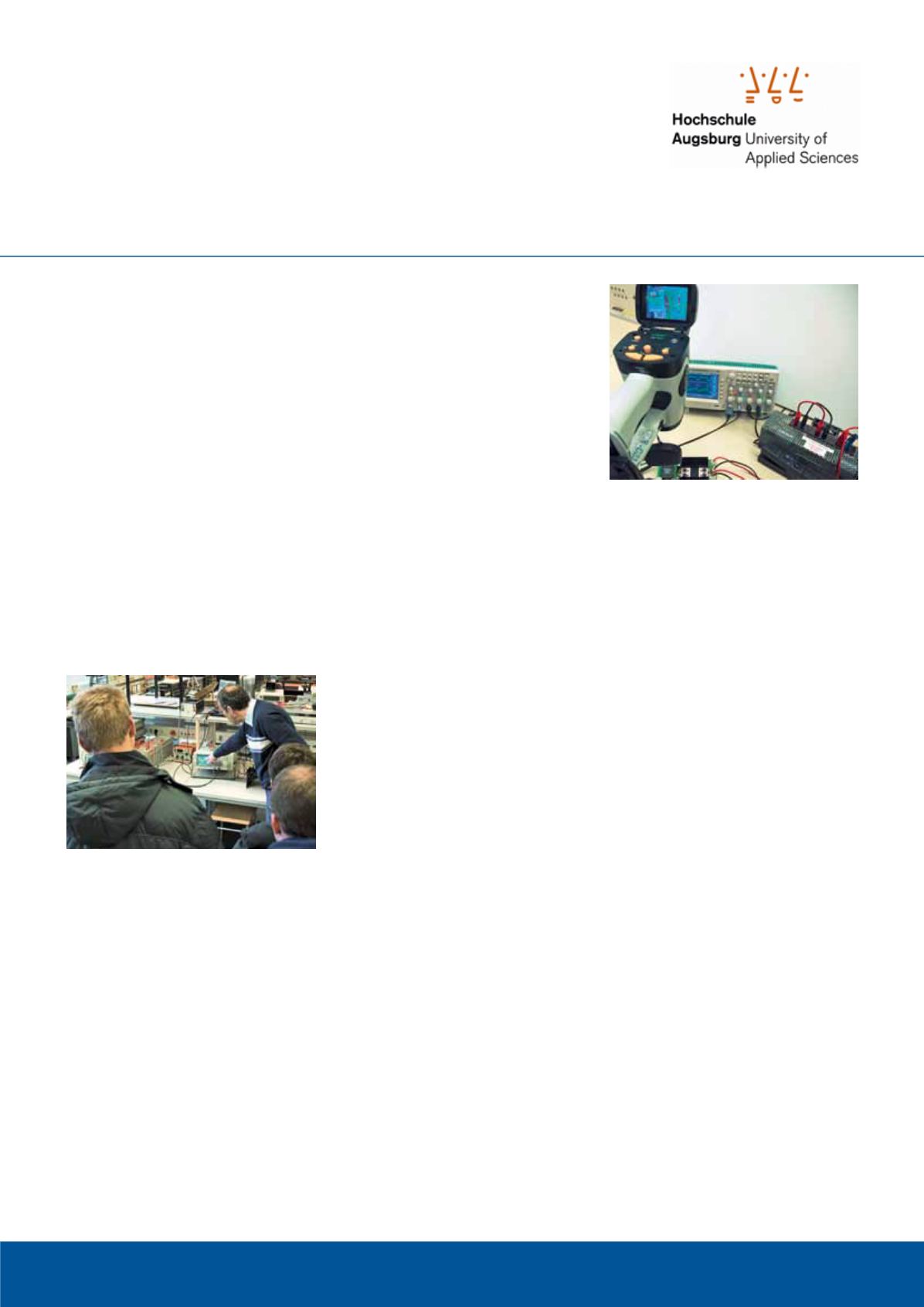
83
University of Applied Sciences Augsburg
Overview and education:
The University of Applied Sciences Augs-
burg is located in the South of Germany
and has a history of more than 300 years.
In the last century intermittent it was called
“Rudolf Diesel Polytechnikum” with re-
spect to Augsburg’s most popular engineer
Rudolf Diesel, the inventor of the world
wide well known diesel engine. Today, the
University of Applied Sciences Augsburg
has approx. 4500 students and is well es-
tablished. The educational arm consists of
seven faculties. One of them is the depart-
ment of Electrical Engineering with approx.
600 students and 18 professors. It contains
the power electronics institute with actual
35 students per year, too.
In the power electronics course of the
Bachelor- degree following items will be
discussed:
•
Passive components, the influence of
the EMI behaviour and filter topologies
•
Today’s most important semicon-
ductors
•
DC/DC converter
•
DC/AC and AC/DC converter
•
Principles of SMPS
IIn cooperation with the University of Ul-
ster (Belfast), a Master course will be of-
fered. In the “power electronics and
drives”- lecture the students learn details
of space vectors and different types of
three phase inverters. Mini projects com-
plete the course.
The new degree “Master of Applied Re-
search”, university experiences come to-
gether with the industry. For details,
please contact us.
In the lab:
The power electronics laboratory is well
equipped for education as well as re-
search and development investigations.
The focus is on the small and medium
power rage. The AC-power supply is de-
signed for voltages up to 1000V and the
maximum (line)-power is up to 40kW. In
the lab a 500V/ 10kW- DC- network is
available, too. A wide spectrum of meas-
uring systems allows analysing the EMI-
behaviour as well as a high precision
power determination. Combining these
with our infrared camera for thermal in-
vestigations complex system tests can be
done. But it has to point out, that out-
sourcing or a very rapid prototyping can
not be offered.
Research and development:
The focus of the institute is on high effi-
cient PFC- stages. In Today’s topologies,
a bridge rectifier rectify the mains volt-
age. The output of the bridge rectifier
is connected to a boost converter. Input
rectifier and the PFC diode build up two
rectification stages. This reduces the ef-
ficiency more then necessary. Bridgeless
PFC’s have less conduction losses. Due
to the missing rectifier bridge bridgeless
PFC-converter causes a higher common
mode noise than with Today’s standard
boost converters. A simple and low cost
new L-C-EMI- filter was found out and
published. After that, a digitally control
circuit was designed. Also the input volt-
age respectively input current measuring
was optimized.
Some other investigations with industrial
partners are:
•
Thermal and electrical failure analysis
of solar inverters
•
Analysing of the influence of modern
diodes (SiC, GaAs) on the total PFC-
stage efficiency.
•
Influence of IGBT or MOSFET on the
efficiency in electronic ballast
•
Energy recovery inverter for agricultural
application
•
Analysing of thyristor- controlled arc
welding systems


